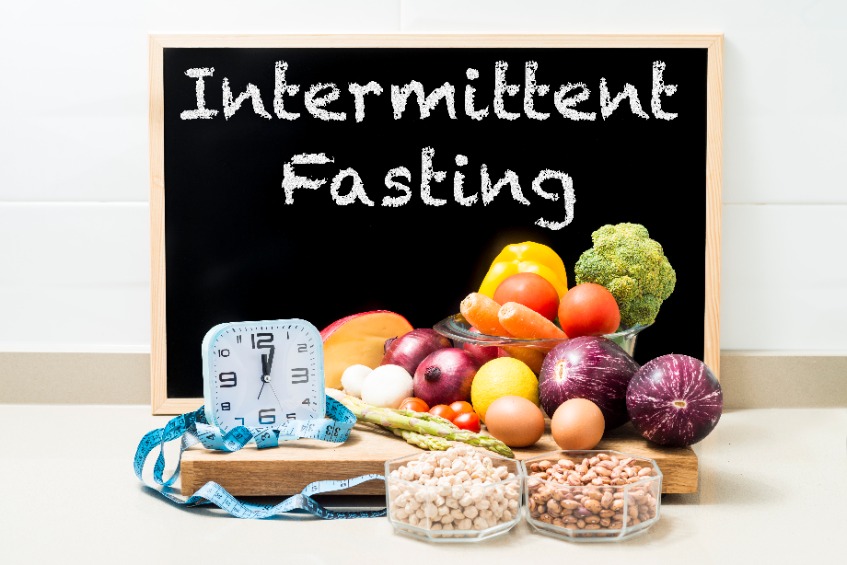What’s the best weight loss program? New research finds that time-restricted eating and high intensity exercise together more effective for weight loss.
A new study found that people who combined time-restricted eating and high intensity exercise not only improved their cardiometabolic health but also achieved the most noticeable body composition changes. This may be the best weight loss program.
A small study has found that combining time-restricted eating and high intensity exercise may improve cardiometabolic health and contribute to weight loss.
• Participants who combined this diet and exercise approach achieved the most noticeable body composition changes.
• Experts say this is because time-restricted eating can create a calorie deficit, and exercise can lead to an increase in lean muscle mass.
A new study has found that time-restricted eating and high intensity exercise can work together to improve health and help people achieve fat loss.
Time-restricted eating, also known as intermittent fasting, involves limiting the hours for eating to a specific number of hours each day.
The research published in the PLOS ONE Journal found that, when combined, time-restricted eating and high intensity exercise could contribute to weight loss and improve markers of cardiometabolic health, including cholesterol, blood glucose, and lipid levels.
Best Weight Loss Program Study Protocol
This was the protocol for the best weight loss program study:
• 64 women with obesity were assigned to one of three groups: time-restricted eating (diet only), high intensity functional training (exercise only), or time-restricted eating plus high intensity functional training (diet + exercise).
• Participants ate only between 8:00 am and 4:00 pm, and those in the functional training groups worked out three days per week with an instructor.
• After 12 weeks, all three groups had achieved significant weight loss and body composition improvements. Favorable changes were also found in lipid and glucose levels.
• Participants in the diet+exercise group achieved more noticeable body composition changes and cardiometabolic parameters compared to the other two groups.
The authors said, “Combining time-restricted eating with High-Intensity Functional Training is a promising strategy to improve body composition and cardiometabolic health.”
However, they note that this is a small study and more research is needed.
The benefits of time-restricted eating and high intensity exercise
Registered dietitian Emma Shafqat, who was not involved in the research, says she isn’t surprised by the findings of this study, even though time-restricted eating doesn’t seem to restrict your total calorie intake – which is necessary for weight loss to occur.
She said that studies have found that people often spontaneously reduce their energy intake when following an intermittent fasting plan, inducing a mild (1%–4%) body weight loss over periods of time lasting from 1 week to 3 months.
Likewise, celebrity personal trainer Michael Baah says the combo of time-restricted eating and high intensity experience tend to work well together.
“When we limit the time we eat and do intense workouts, our bodies get better at using energy and processing sugar, and it’s like they become more efficient at staying healthy,” he explains.
Intense exercise has added benefits when it comes to fat loss. “Time-restricted eating helps us burn fat, and intense exercise helps us build muscle,” Baah surmises.
This is good news for anyone wanting to sustain their weight loss in the long term as lean muscle mass increases your body’s metabolic rate, meaning you burn more calories.
As well as triggering weight loss, the combination of time-restricted eating and high intensity exercise can also lead to improvements in cardiometabolic health.
“Cardiometabolic disease describes a range of conditions starting with insulin resistance, progressing to the metabolic syndrome, prediabetes, and finally to more severe conditions including cardiovascular disease and type 2 diabetes,” Shafqat explains.
She notes that time-restricted eating improves cardiometabolic health in lots of ways, for example, improving glucose tolerance, reducing blood pressure, and enhancing gut function.
Risks and challenges of time-restricted eating to consider
However, time-restricted eating won’t be the right weight loss tool for everyone.
“The only way to lose fat is to be in a calorie deficit. For some people, time-restricted eating is simply a tool that allows them to achieve that goal,” says Baah. “If they restrict their time eating window, it [often] reduces their overall calories for the day, which puts them in a calorie deficit.”
While this works for some, it may not fit with your lifestyle or may feel too restrictive. Time-restricted eating is not the only way to lose fat. However, if you are planning to follow a time-restricted eating plan, Shafqat says ensuring you feel adequately fueled and satiated is key.
“I recommend starting your day with a breakfast that is high in fiber, protein, and some fruit, for example, full-fat yogurt with seeds and fruit or porridge with added seeds and fruit,” she says. “I’d also recommend eating a good balanced meal before 4 pm, which includes fiber-rich carbohydrates, protein, and plenty of vegetables to help prevent hunger before bedtime.”
Shafqat says planning is key when it comes to time-restricted eating.
“In this study, there appears to be an 8-hour schedule in which participants can eat, so if you’re following this schedule. I recommend scheduling your meal and snack times and preparing your food in advance.”
How to get started with high intensity exercise for beginners
However you plan to lose weight, factoring exercise into your schedule is a good idea. If high intensity exercise sounds intimidating, don’t worry, says Baah.
“Start with simple exercises and focus on using good form,” he advises.
Ideally, you should aim for a mix of strength and cardio exercises. Some exercises Baah recommends include skipping or jumping jacks, bent-over rows, weighted crunches, and dumbbell reverse lunges.
The term ‘high intensity’ can conjure up images of grueling workouts, but Baah says it’s important to give your body time to rest and recover. Take a rest period of about 60 seconds between each set and plan rest days into your schedule.
The key to making progress, according to Baah, is to ensure you lift heavier weights over time.
Takeaway
Combining time-restricted eating and high intensity exercise appears to contribute to fat loss and improve other health markers related to cardiometabolic health.
However, if you have a goal of losing weight, a calorie deficit is the most important factor, and if you find time-restricted eating too restrictive, you should consider something else.
Click here for more on best weight loss program.







